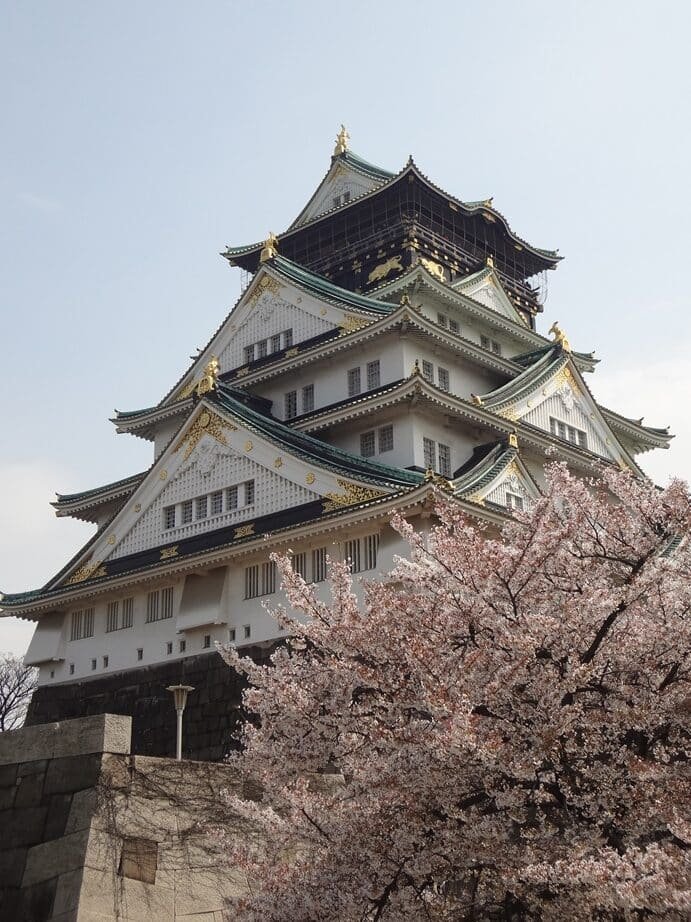
For Expo ’70, the international exposition held in Osaka Prefecture in 1970, two time capsules were buried outside Osaka Castle. The location was a great choice, because in many ways, Osaka Castle is like a time capsule itself, offering a window into life in the area for over 1000 years. After Osaka Castle was first built in the late 16th century, the city of Osaka flourished around it, but even before the castle existed, the place where it stands had a long history as an important site.
Now, let’s take a trip through the history of Osaka Castle, from the imperial capital and warrior monk stronghold that preceded it, to the castle’s role in the age of samurai and its position today as a popular tourist site and symbol of Osaka City.
Table of Contents
Before Osaka Castle
Most of today’s Osaka City is built on a plain, but Osaka Castle is on the north end of a raised section of land called the Uemachi Plateau. Long ago, most of that plain was underwater, and the Uemachi Plateau was a peninsula. To the west of the peninsula was the Seto Inland Sea, and to the east was a body of water called Kawachi Lake. The plain later became liveable land too, but early settlements in the area were all on the Uemachi Plateau.
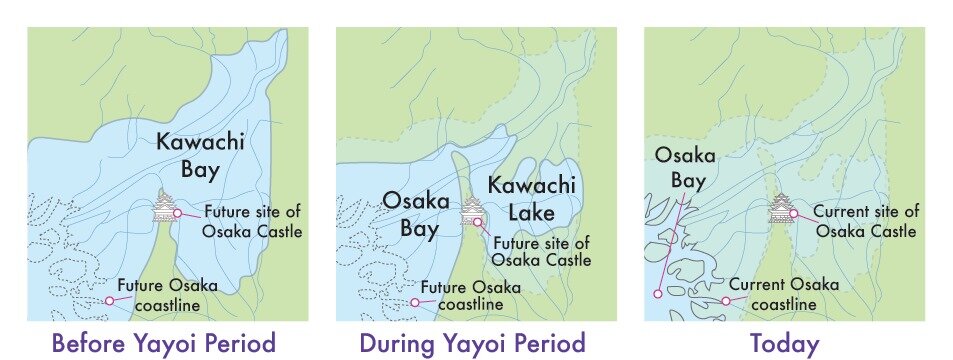
Naniwa-zu was a port town in roughly the area where Osaka Castle is today, probably founded at some point before the 7th century CE. At that time, the imperial capital was often moved, but they were usually in what is now Nara Prefecture. Being on a peninsula by the sea, near where boats would come in to sail up the river to those imperial seats of power, Naniwa-zu had a convenient strategic location.
The town was even made into the capital itself at least once. The semi-legendary Emperor Nintoku supposedly used Naniwa as his capital in the 4th century, and ordered the excavation of a canal crossing the Uemachi Plateau. Later, during the 7th century, Emperor Kotoku returned the capital to Naniwa and established an imperial palace there. Then, even though the capital was moved again after Kotoku’s death, the site was used for other official purposes including diplomacy and naval campaigns, and the palace was even rebuilt several years after being destroyed in a fire.
Most information about Emperor Nintoku comes from records which also include myths and legends, and even the dates of his reign are dubious. Because of this, it is hard to say whether it’s true that Naniwa was his capital. On the other hand, there are clear archaeological records from the time of Emperor Kotoku and later. An excavation project beginning in the 1950s uncovered evidence of the palace buildings. One surprising finding of the project was that the palace seemed much bigger than expected, suggesting that Naniwa was a more significant political centre than historians had realised.
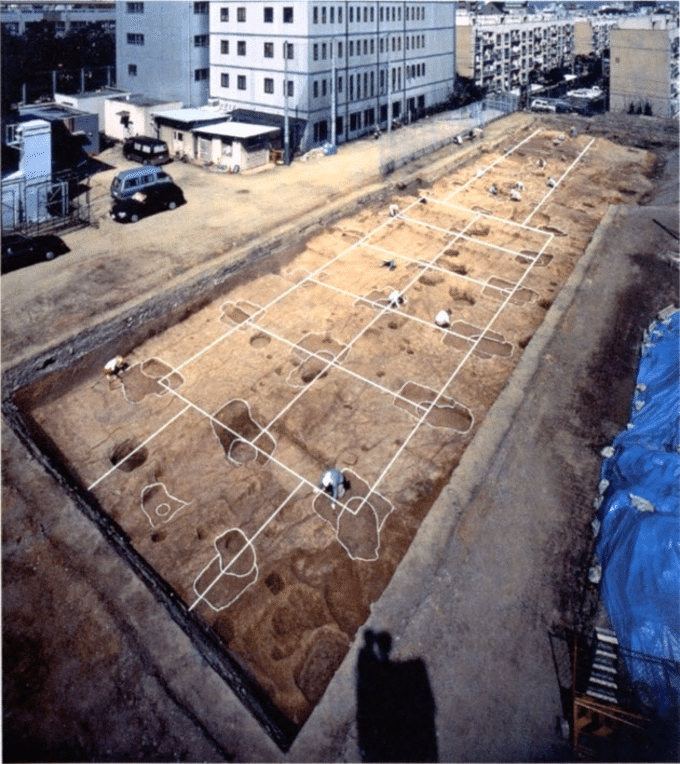
In ancient Japan, the Osaka Castle area was an important location for diplomacy and other political affairs. Naniwa declined and disappeared over time after later emperors moved their capitals further away, but other settlements in the area continued as fishing villages. Centuries later, the strategic value of the Uemachi Plateau became important again.
Ishiyama Honganji
The immediate predecessor to Osaka Castle was Ishiyama Honganji, a temple founded in the late 15th century. That was a period of major social upheaval in Japan, as nobody had clear political control over the entire country. Local warlords held sway in their provinces or domains and regularly fought each other for authority.
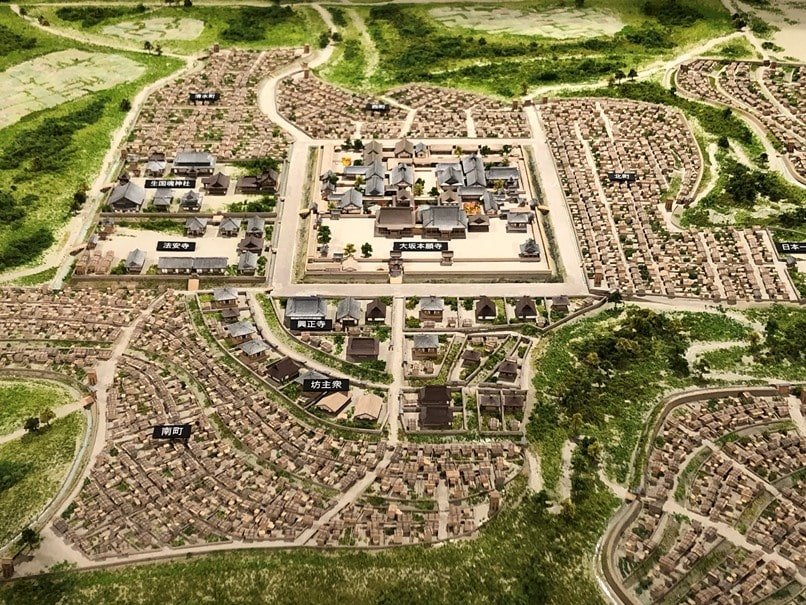
At that time, there were many popular uprisings against the samurai class, led by groups known as ikko-ikki. They had no central authority figure either, but they were influenced by Rennyo, the leader of a Pure Land Buddhist sect. He was originally based near Kyoto, but he and his sect were forced to move several times, eventually ending up in the Osaka area. In 1496, not long before Rennyo’s death, the sect founded a new fortified temple called Ishiyama Honganji on the former site of the Naniwa palace. The town that grew there was called “Osaka”, literally meaning “big slope”, as it was built on the sides of the Uemachi Plateau leading to the stronghold.
Soon, warlords appeared who intended to bring all of Japan under their control. The first of the three “great unifiers” was Oda Nobunaga, who is remembered as a merciless leader. The ikko-ikki groups were a problem for Nobunaga, and in 1570 he tried to defeat them with an assault on Ishiyama Honganji from a base in nearby Sakai. As there was a lot of outside support for Ishiyama Honganji, this turned into the longest siege in Japanese history. After more than ten years, Nobunaga’s forces finally made the monks surrender and had the temple razed to the ground.
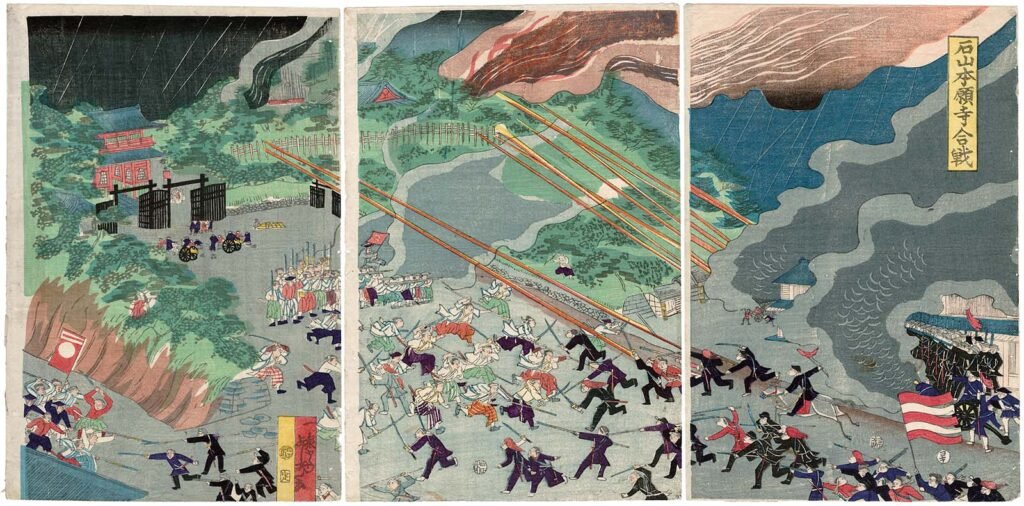
Less than two years after that victory, at the height of his power, Nobunaga died after being betrayed by one of his generals. His successor, Toyotomi Hideyoshi, continued his mission of uniting the country under one leader. One of Hideyoshi’s first projects was returning to the site of the Naniwa palace and Ishiyama Honganji, to build a new castle.
Hideyoshi’s castle
Construction of Osaka Castle began in 1683 under Toyotomi Hideyoshi’s orders. It was designed to be similar to Nobunaga’s stronghold of Azuchi Castle, but even more impressive. It had a five-storey main tower with a further three levels below and was surrounded by several moats, making it both awe-inspiring and difficult to attack. Hideyoshi was fond of using gold to show off his power, and he did the same with the castle, decorating the main keep with gold leaf. Osaka Castle, as built for Hideyoshi, was apparently several times bigger than what remains today, and took over ten years to complete.
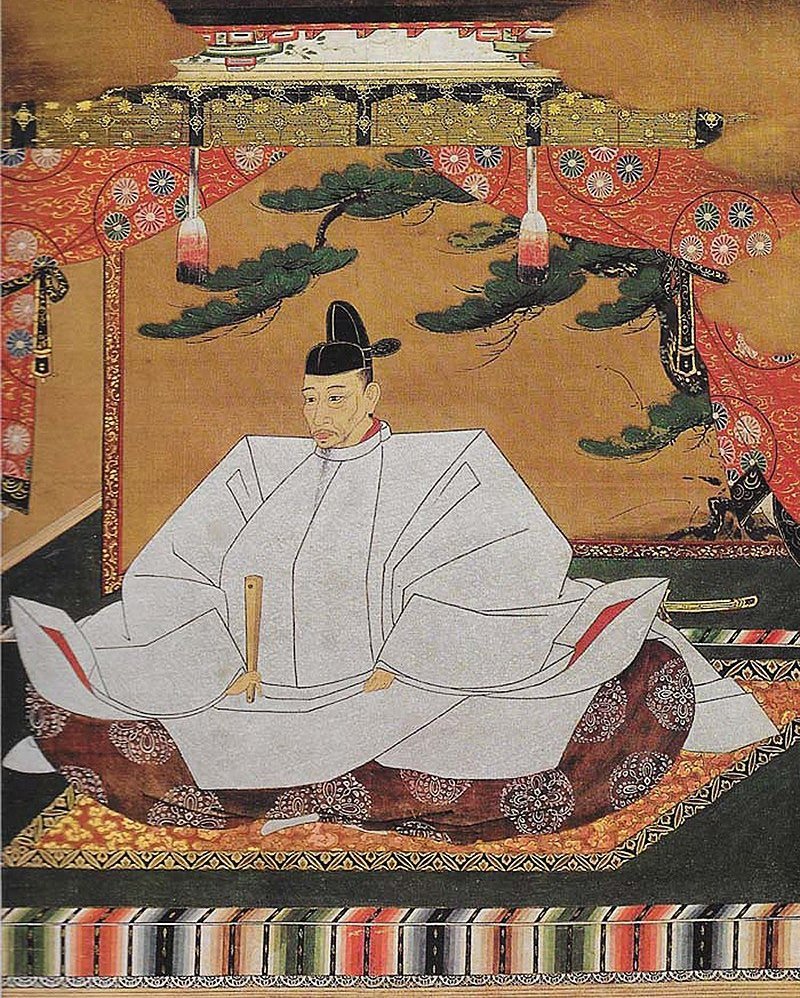
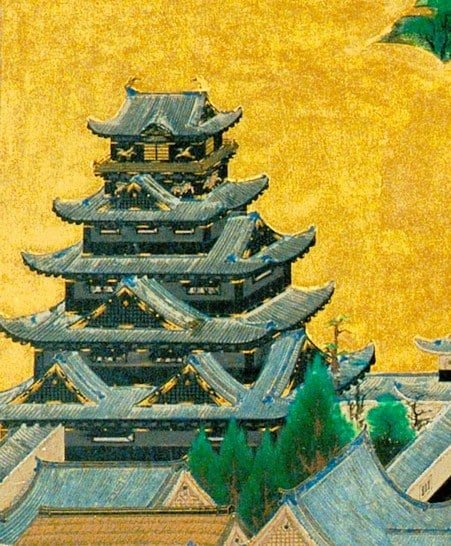
Osaka Castle was Hideyoshi’s headquarters as he used diplomacy and military strategy to try and unite the country. That goal was not finished within his lifetime, but he made an enormous impact while he was effectively ruler of Japan. He instituted a new class system, carried out Japan’s first census and outlawed slavery. Cultural traditions like tea ceremony developed and flourished under Hideyoshi’s leadership too.
Hideyoshi’s castle and the surrounding town of Osaka would have been the political centre of a newly united Japan if he had accomplished his goal. However, he died in 1598, while his son and heir was still a child. Hideyoshi had appointed five powerful lords to take over temporarily, but one of those lords, Tokugawa Ieyasu, had other plans. Ieyasu increased his power and soon openly began his own war of unification, officially becoming Japan’s shogun in 1603.
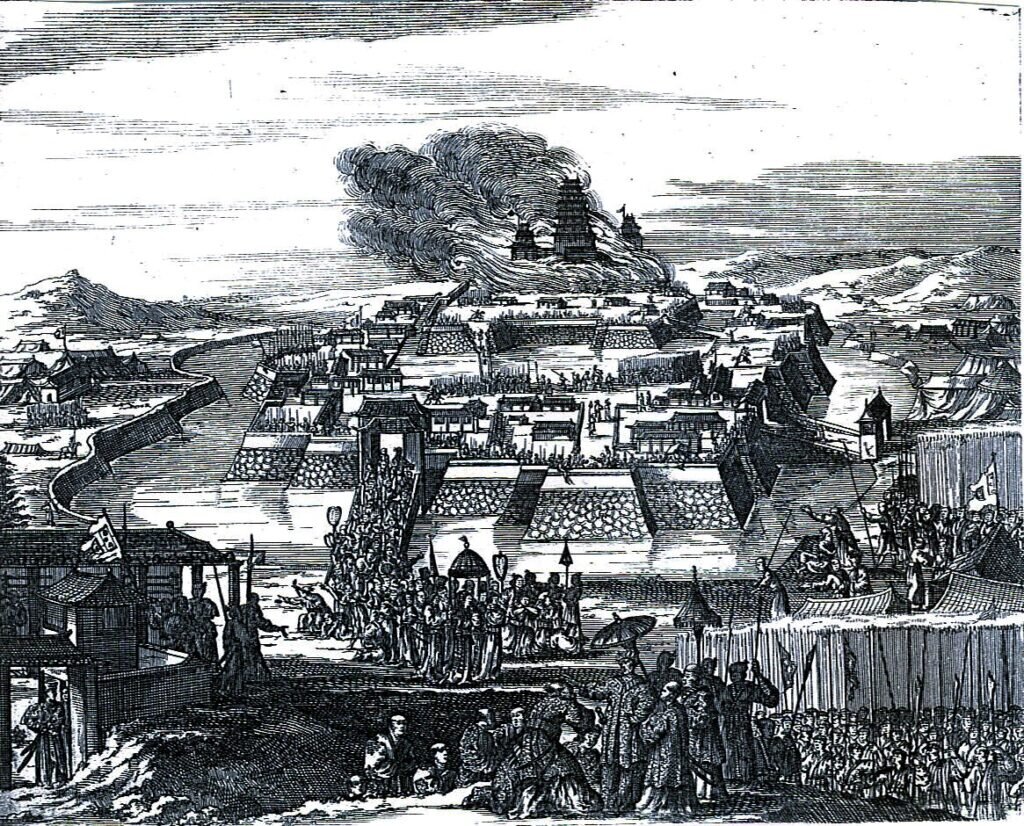
After Tokugawa Ieyasu established his new regime in Edo (Tokyo today), there continued to be tension between him and the remaining Toyotomi clan. This came to a head in 1614, when Ieyasu launched the Osaka Campaign to put an end to the threat posed by Hideyoshi’s son and his allies. There was another major siege against Osaka Castle and many battles in and around the town. When the castle finally fell, it marked the end of serious opposition to the Tokugawa clan, making way for over 200 years of relative peace in Japan.
Osaka Castle after Hideyoshi
During the Tokugawa clan’s rule, Osaka Castle declined in importance. The castle buildings were severely damaged as a result of battles in the Osaka Campaign. It was rebuilt, only for lightning strikes to destroy more of the main buildings later in the 17th century. The castle then fell into disuse for many years.
On the other hand, this was the time when Osaka grew from a small castle town into a bustling city. The merchant class had a lot of influence in Osaka, and their trade networks made them very wealthy. By the time the samurai-led social order came to an end in the 19th century, Osaka merchants were able to spend money in ways even the government couldn’t. Their wealth made it possible to carry out long-awaited repairs on Osaka Castle in 1843.
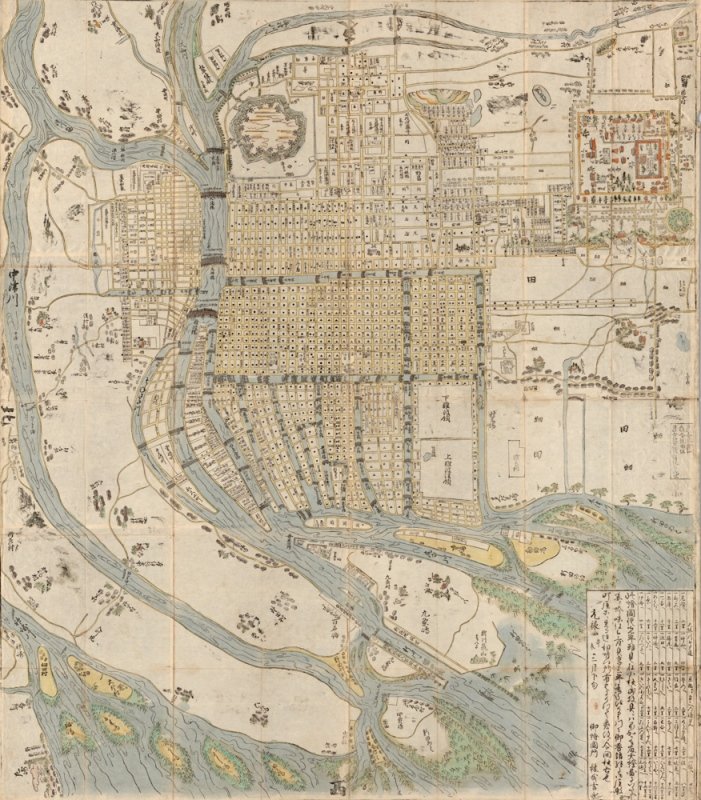
At that time, the military government of Edo was under pressure from all sides. The final two shogun used Osaka Castle as a base for suppressing rebels and for conducting diplomacy with Western ambassadors. The castle was also central to the fall of the old regime. The last shogun, Tokugawa Yoshinobu, prepared his troops for battle in Osaka, before fleeing to Edo. When the rebels then took the castle and reduced it to ruins once more, it was a crucial symbolic victory. Soon afterwards, Japan’s first modern government was formed.
Osaka Castle in modern Japan
Osaka Castle has been destroyed many times, like a lot of other Japanese castles. As well as the ones that were damaged or burnt down during various wars, many were deliberately destroyed or dismantled early in the modern era, because they were seen as symbols of outdated traditions. Even after they gained more public support in the 20th century, air raids in the Second World War caused damage to many castles too.
Because of this, only 12 castles in Japan today are described as “original” – ones where the main keep, made using traditional techniques, has survived. Most others, including Osaka Castle, are modern reconstructions built with steel-reinforced concrete. The current main tower dates back to 1931, when it was one of Osaka mayor Seki Hajime’s various construction projects. Public funds were running low at the time, so once again it was thanks to the donations of Osaka residents that the reconstruction went ahead.
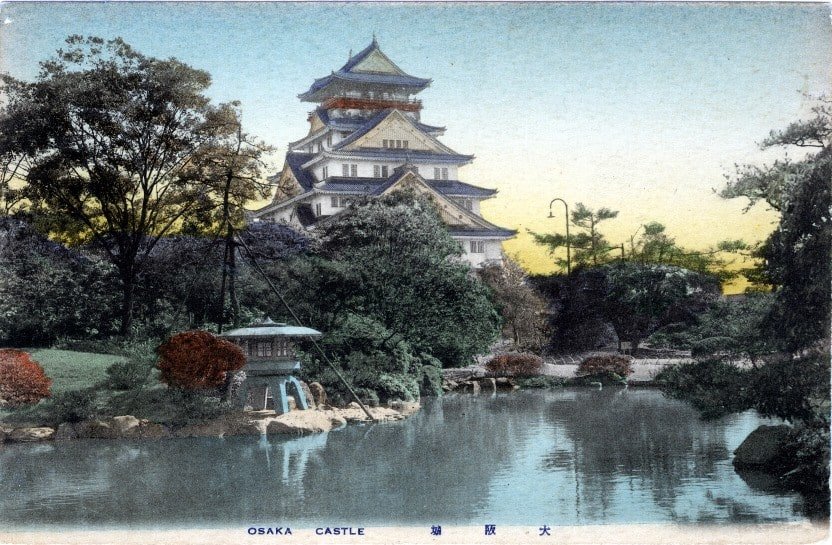
The grounds of Osaka Castle were also used by the army in the 20th century. It was home to the Osaka Army Arsenal, which was one of Japan’s largest armouries by the time of the Second World War. Near the very end of the war, the arsenal was destroyed, but the actual castle buildings survived. The site of the arsenal later became Osaka Castle Park.
Visiting Osaka Castle today
Nowadays, Osaka Castle is among Osaka’s most popular tourist destinations. Together with Tsutenkaku, the lights and signs around Dotonbori, and the Expo Park’s Tower of the Sun, the castle is also one of the most recognisable symbols of the city. Getting there by train is easy, with a few stations near the castle. Osakajokoen Station is on the JR Loop Line, Morinomiya Station is on the JR Loop Line as well as the Osaka Metro Chuo and Nagahoritsurumiryokuchi lines, and Tanimachiyonchome Station is on the Chuo and Tanimachi metro lines. Visiting the castle costs 600 yen.
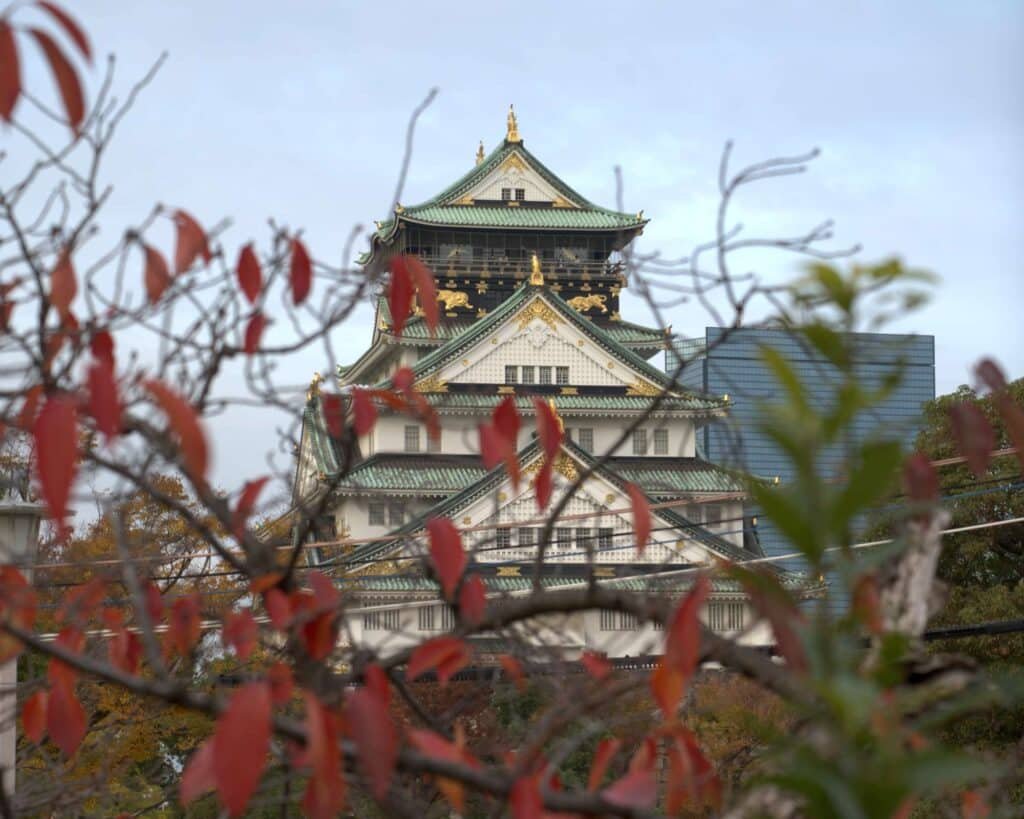
Even though today’s castle is the 1931 reconstruction, the main keep is still very impressive to look at. Meanwhile, inside is a sleek museum teaching visitors about the castle’s history over several floors. This leads to the top, where there is a viewing platform with astounding views of the city in all directions. Elsewhere, there are also various other structures which are significantly older than the concrete main keep, 13 of which are designated as Important Cultural Properties. Together, the old castle buildings and the museum offer a fascinating look into the history of Osaka Castle and the city.
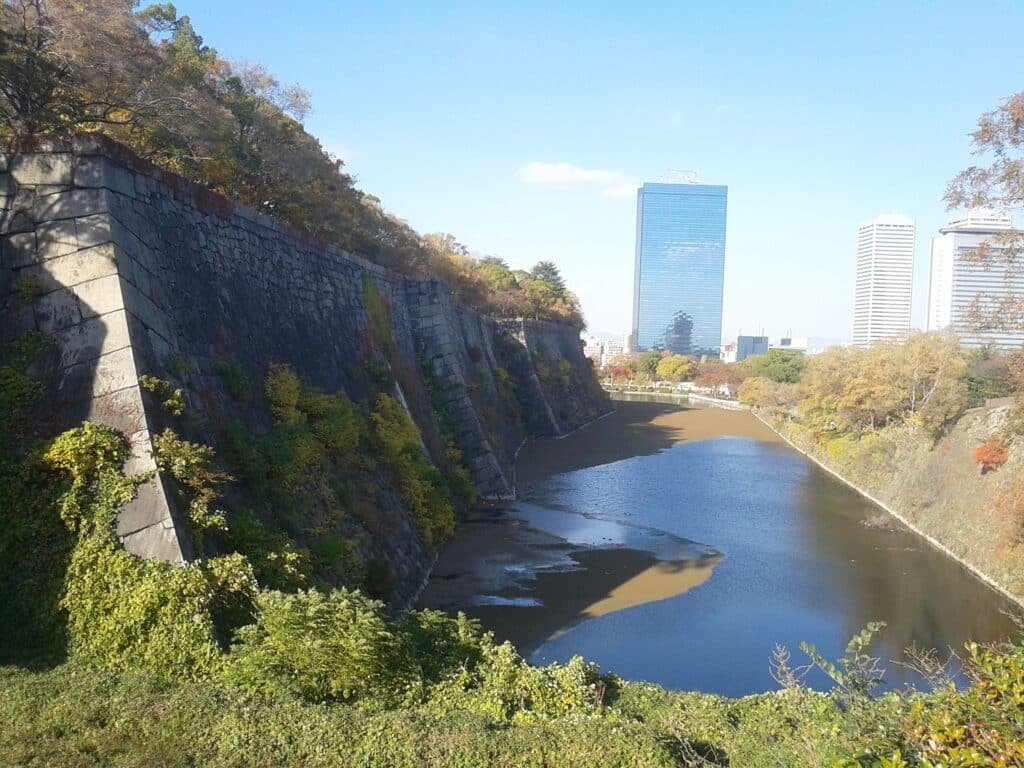
Around the castle is Osaka Castle Park. The park features many other attractions too, like a concert hall and the Osaka Museum of History. You can also see the site of the Expo ’70 time capsule mentioned earlier, and between February and April, the park is a popular destination for seeing plum and cherry blossoms.
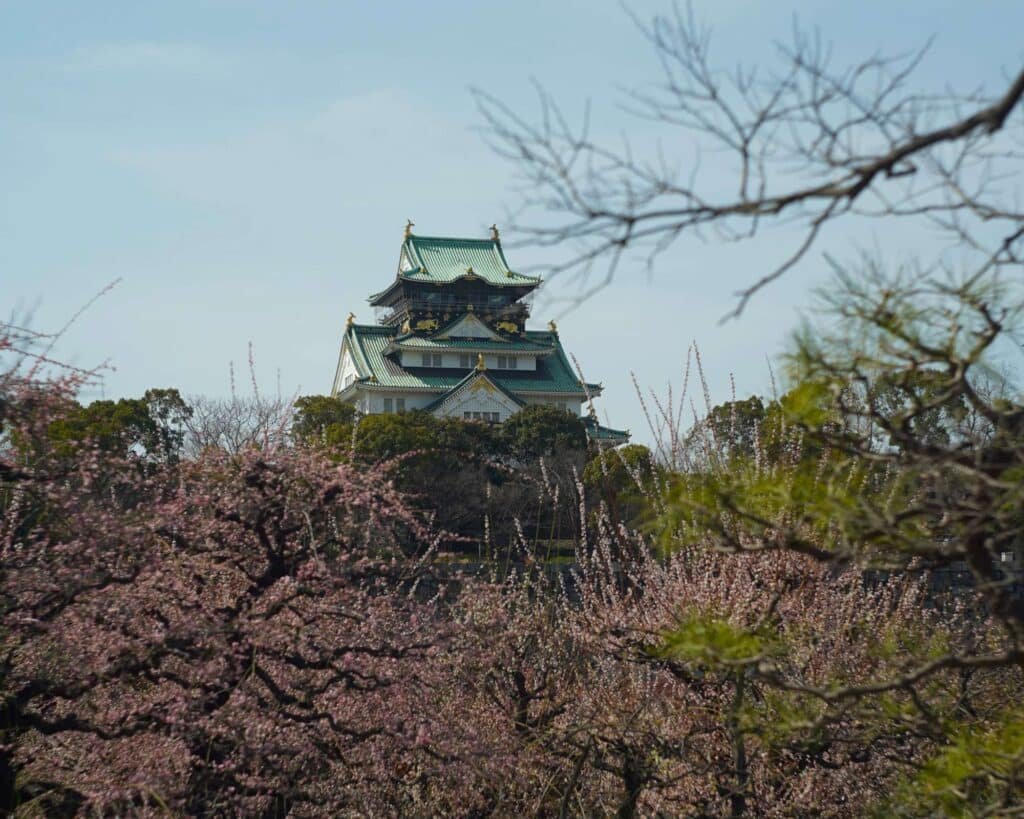
If you’ve visited Osaka Castle and want to check out other Japanese castles, there are other options in the area as well. Other castles you can visit in Osaka Prefecture are Ikeda Castle and Kishiwada Castle, while the newly reconstructed Amagasaki Castle is also just a short train ride away. For more passionate historians, there are some remaining ruins of Takatsuki Castle, Ibaraki Castle, Akutagawasan Castle and Chihaya Castle too. Finally, the nearest original castle is the beautiful Himeji Castle in Hyogo Prefecture, which is an hour or two from Umeda by train.
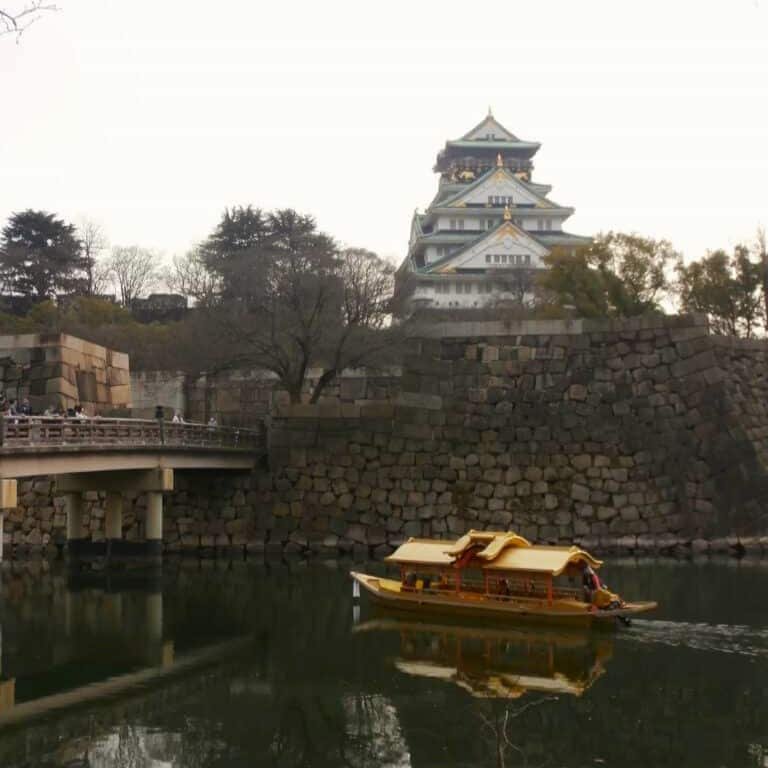
Except where otherwise noted, graphics are by Rachel Stewart and other images are photographs taken by the author.
























